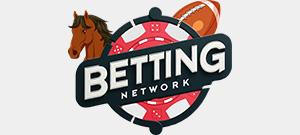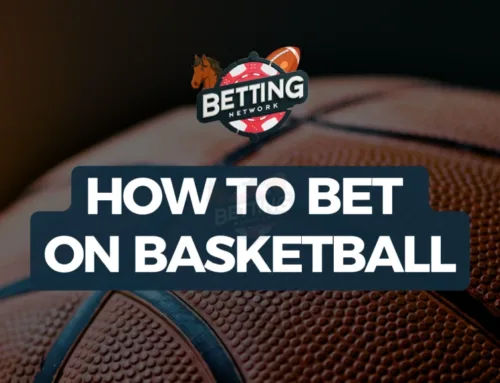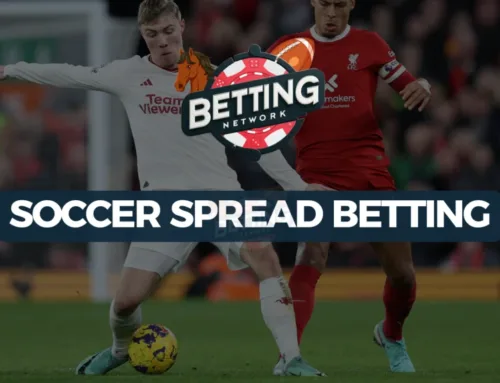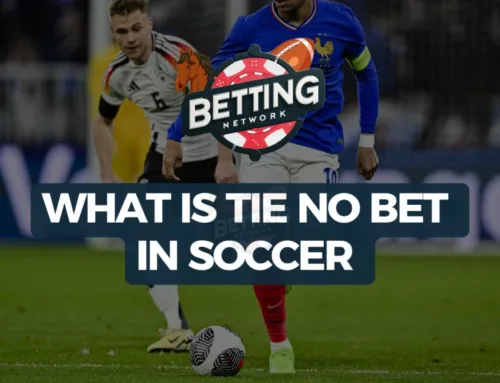You’ve no doubt seen those soccer sport bras that players sometimes use during matches and training and wondered: Why Do Male Soccer Players Wear Sports Bras? We’ll get to the bottom of it in this piece!
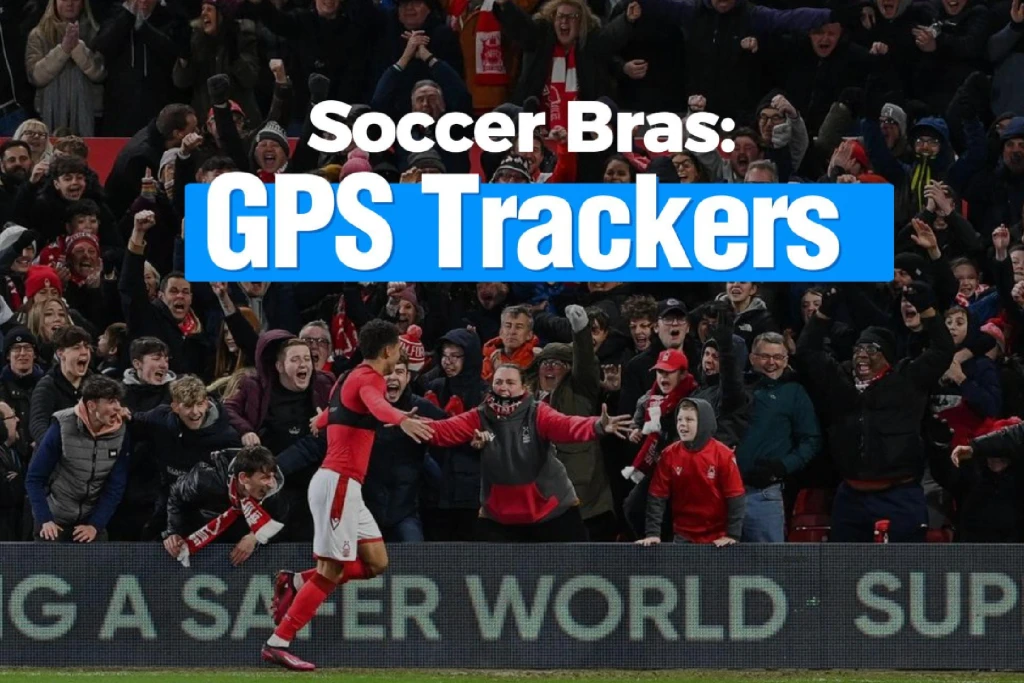
What are these Soccer “Sports Bras”?
Well, turns out they’re not sport bras, they’re actually GPS tracker vests and are an essential tool in modern soccer. The question isn’t Why Do Male Soccer Players Wear Sports Bras, rather why are they wearing GPS trackers?
Why Soccer Players Use GPS Tracker Vests
Think of these GPS tracker vests as an upgraded, high-tech version of those fitness bands a lot of us use. It tracks and logs all sorts of fitness and performance data, but it also tracks their position on the field. Once the data is organized and patterns are set, all sorts of strategic insights can be used by the technical staff.
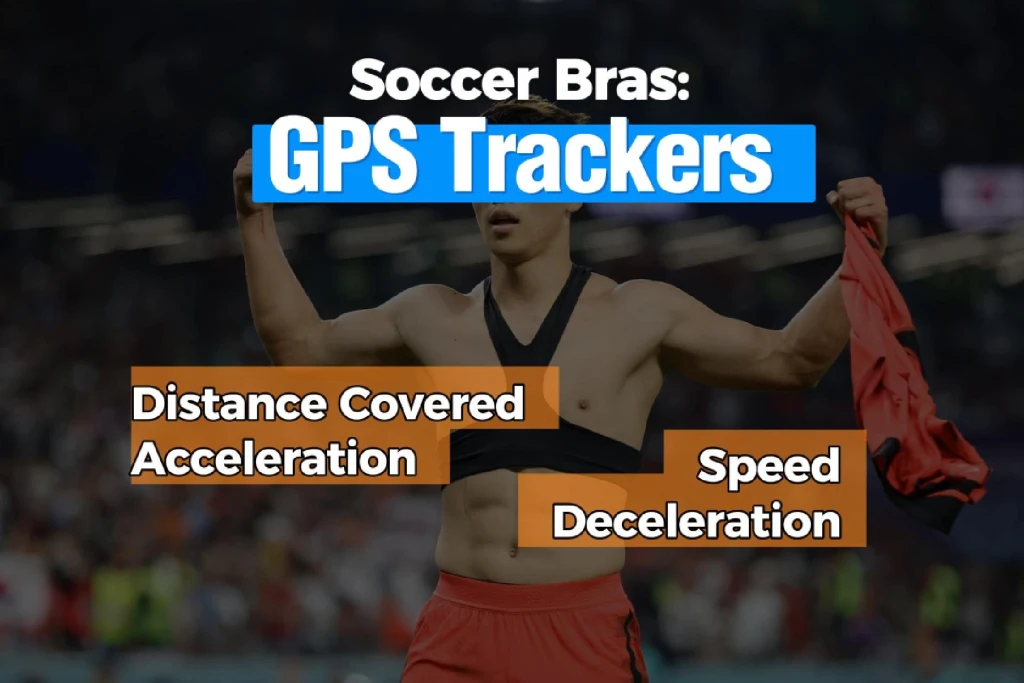
Purpose of GPS Tracker Vests
Here’s a list of some of the performance data these vests track:
- Distance covered
- Speed
- Acceleration
- Deceleration
Coaches and the club’s technical staff can see whether the player is performing at a high level, or if they’re not sprinting enough during the game.
There’s also the fitness and health related data, such as heart rate and overall physiological metrics. These help the medical staff and technical staff prevent injuries and plan out player substitutions during the game. All players have a certain number of minutes they can perform at the highest level, and these vests accurately set these limits with statistical, objective data.
Data isn’t just a tool, it’s a game-changer not only for sports physicians, but also for soccer players (and any other athlete for that matter). Smartwatches nowadays for instance, even guide players on their diets and specific health indicators in their daily lives to get the most out of themselves, following the same trend and use these so-called sports bras provide.
For a professional soccer player and the team’s staff, data about their performance is just as important as their team performance stas, set-piece effectiveness injury reports or goalkeeper save percentages are for bettors. We go deep into what kind of data is valuable for different soccer bets in our betting on MLS post in case you’re looking to have some fun.
GPS Tracker Vests Components
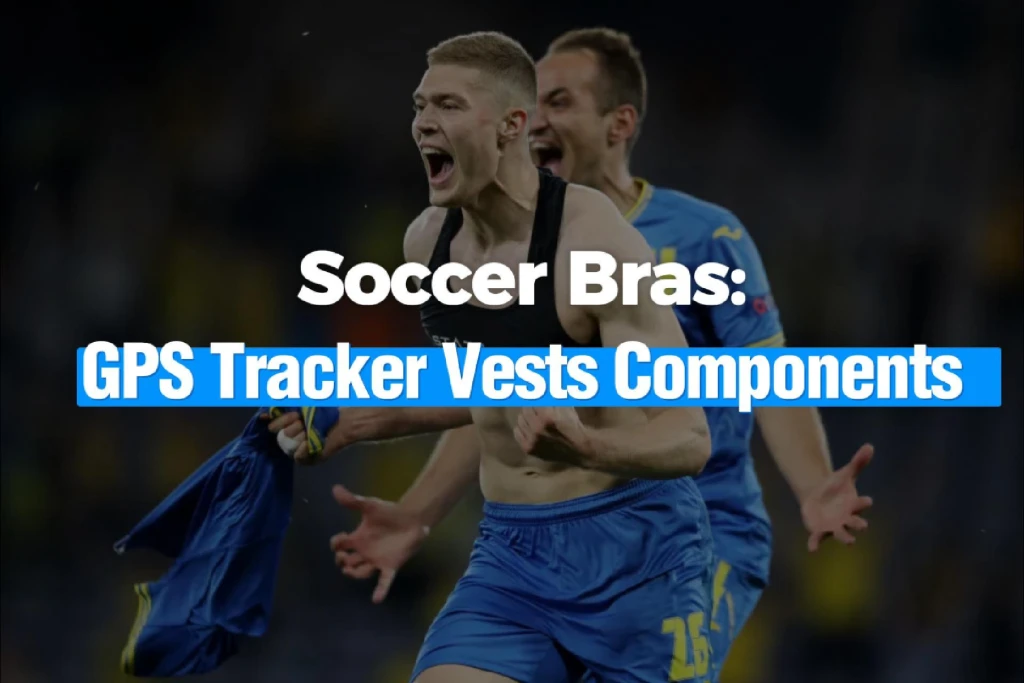
In short, GPS tracker vests are a blend of cutting-edge technology and practical application, helping soccer teams optimize performance and keep their players healthy.
The GPS tracker vests blend cutting-edge technology with a practical design. It resembles a comfortable sports bra that doesn’t limit the player’s range of motion with tons of sensors and trackers that feed the data analysts with all the data they need.
Here are some of its key components:
How These Components Work Together
Your typical GPS vest or “Soccer Sports Bra” uses the GPS tracker to pinpoint the player’s location, and continuously updates it to create a map of their movements. The team’s staff can then figure out whether or not the player is following the team’s positional order and role-related functions.
Then, the accelerometer and gyroscope track how fast the player accelerates, decelerates and switches directions. The staff can then review the info gathered and determine the player’s overall agility and quickness, and see if everything is within normal parameters. Otherwise, they might need to switch training regimes, nutritional plans and more to guarantee the player meets the required performance benchmarks.
The heart rate monitor also tracks the player’s cardiovascular exertion to track overall player engagement and key health indicators. This perfectly answers Why Do Male Soccer Players Wear Sports Bras.
A bit on Data Transmission and Analysis:
Real-Time Feedback: During training or matches, data from the GPS tracker and sensors is often transmitted in real-time to coaches and analysts on the sidelines. This allows immediate adjustments based on performance.
- World-class clubs track all this info in real time and relay key information to the coach. This gives the coach additional information rooted in utmost objectivity, which helps them direct the team on the pitch and plan substitutions.
He might, for instance, tell a specific player to up their intensity during play, or to aid a player in that has accumulated significant distance covered in their offensive or defensive tasks. Players that are near their physical limits probably won’t be able to keep up with the player they’re supposed to cover, which might result in an opposition goal.
All this data is also reviewed to create individual benchmarks, allowing the coach to roughly know when to substitute a player during a game.
In-Game Tactical Changes
Data Insight: During a match, the GPS data indicates that a key midfielder is covering significantly less ground than usual.
Strategic Adjustment: The coach substitutes the midfielder early, bringing in a fresher player to maintain the team’s intensity and control of the midfield.
All this data is mostly used before the player hits the pitch though. The coaching staff can modify training loads to improve performance, create specialized training routines with the fitness trainer to prevent injuries and much more. Players that cover a lot of ground might get extra recovery time too, so this data also affects player nutrition and availability for future matches.
From a betting perspective, understanding player availability and fitness can directly impact your betting strategy too. Say youre placing a double chance bet on a soccer match: if key players are rested or recovering, betting for the underdog or a draw might make more sense, especially when a team is adjusting its lineup whenever an important player is noticeably being less effective just from playing too much throughout the season.
Why Do Male Soccer Players Wear Sports Bras: Benefits Explained
Gaging the Workload of a Player During a Session
As mentioned earlier, these vests provide the coaching staff with all the performance indicators they need to evaluate player engagement. Players that walk the field instead of actively performing their role and keeping up with offensive and defensive tasks can get benched or switched to a new position that suits their skills.
Monitoring and Improving Player Performance
Players that drop below their benchmarked performance stats, such as distance covered, speed or acceleration are closely examined. There might be fatigue or risk injury to look out for, so their training load and recovery times might be adjusted accordingly. If you’re still wondering Why Do Male Soccer Players Wear Sports Bras, then performance-enhancing insight is the quick answer.
- Alternatively, the coaching staff might talk with the athlete’s personal trainer to alter their fitness training routine. Specialized drills and resistance training that improve overall agility, change of direction and more could be introduced to enhance their performance.
- Cardiovascular fitness data might also be used to adjust the player’s cardio routine.
Why Do Male Soccer Players Wear Sports Bras: Injury Prevention
As mentioned before, each player has varying levels of physical workload, especially in soccer where some positions/roles are just more physically demanding than others. The coaching staff use these vests to monitor metrics like total distance covered, sprint count, and high-intensity runs to guarantee that players are not overexerting themselves.
If a player metrics drop below their individual benchmark, then this could be a sign of fatigue. If left ignored, not only will the team’s performance will drop, but the player himself could suffer an injury. This is a crucial reason also answers Why Do Male Soccer Players Wear Sports Bras: it’s about preserving their health and long-term career expectations.
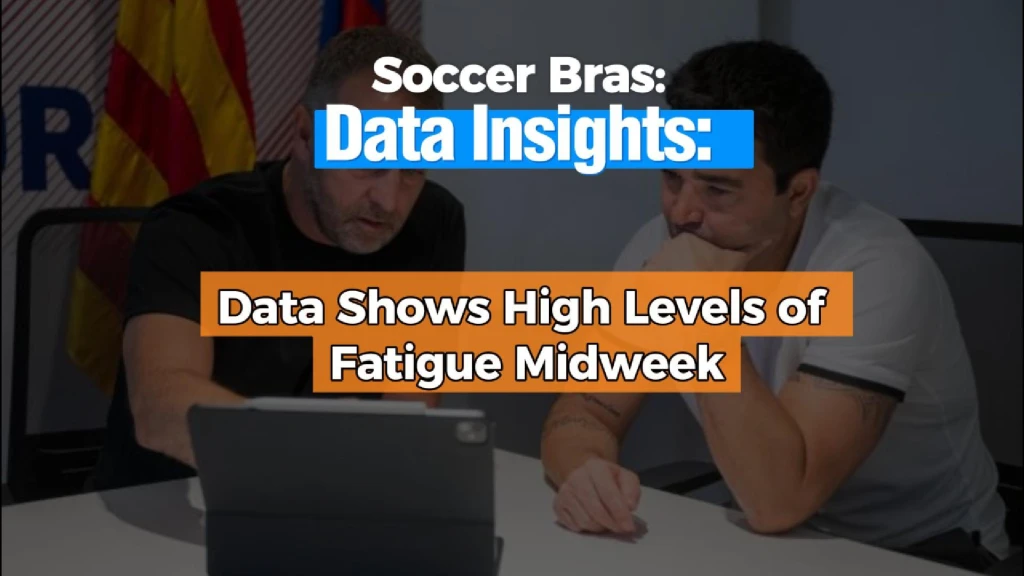
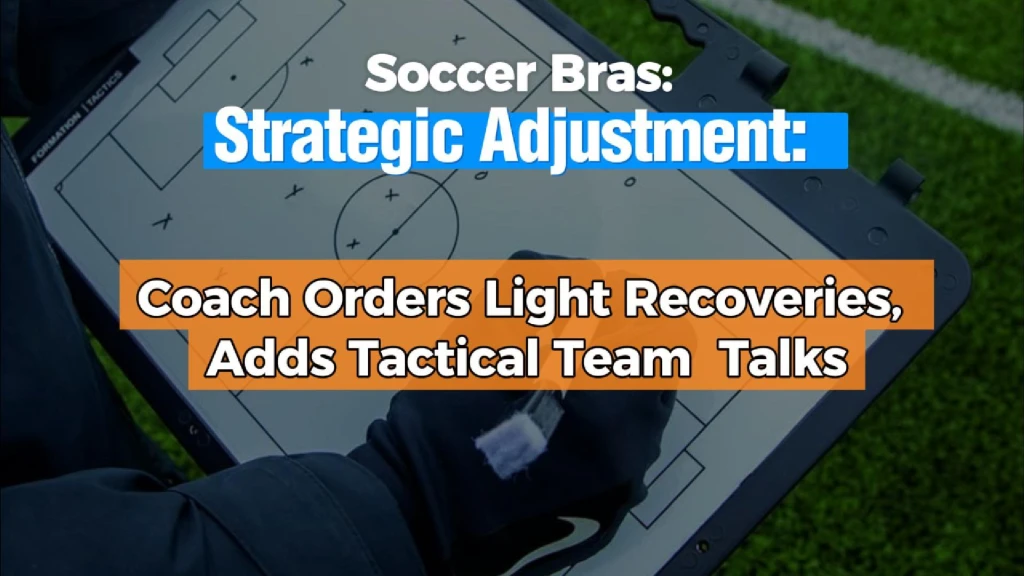
These techy sport bras allow the coaching staff to distribute workload amongst other players and issue rest time to preserve the player’s physical condition as well as the team’s overall performance.
Recovery Process and Personalized Training Programs
This soccer sports bra (GPS vest) can also help in a recovery process. The data it logs can be helpful for crafting personalized recovery plans and track its rehabilitation status. Metrics like speed, acceleration, and heart rate can show when a player is ready to return to full training.
- These same metrics can also be used during training to ensure the player re-injures himself during the recovery or immediate post-recovery process. A rough estimate of how many minutes a player can perform can be established to rigorously follow the recovery schedule.
Identifying Group Outliers
Male soccer players wear these sports bars to gather data that properly catalogues their performance. In every group you’ll have outliers, meaning you’ll have players that record higher metrics than others and you’ll also notice players that severely underperform compared to their teammates.
Top performers that spearhead the distance covered, sprints, and high-intensity efforts metrics need lighter training sessions and specialized training to keep their form. Underperformers might be tricky, since there could be a physical issue that directly affects their performance, or a psychological issue that is holding them back. However, having the data and a pre-established benchmark certainly helps in narrowing down the issue.
How Teams Use the Data for Strategic Planning
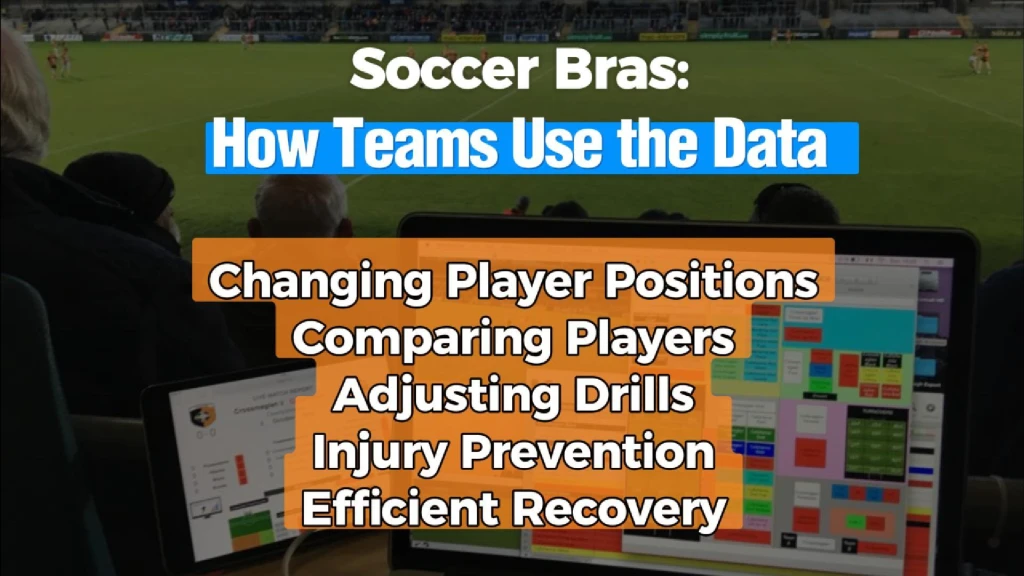
All of this performance data is vital to strategic planning. For example, you might have one of your starters with early signs of fatigue, which might not hinder his performance to unacceptable levels, but it certainly puts them in high risk of injury. With this information, coaches can alter the starting lineup to issue rest to said player, or they could even alter the strategic formation in favor of another player.
Many teams, even at a national team level, practice with different strategic formations, such as 4-3-3 or 4-4-2 to have options in the event of a key player injury. The player compensates the player’s loss by altering their formation, which plays into other key player’s strengths.
The GPS data also helps when evaluating the opposing team’s formation. If their left wing is covered by an underperforming player, then the coaching staff should position a speedy, talented player on the right wing to whittle down this weak spot. Fast players with above-average metrics can exhaust the opposing team’s player and create decisive plays.
Changing Player Positions
Data Insight: Analysis reveals that a midfielder’s highest performance metrics are when they play slightly higher up the pitch.
Strategic Adjustment: The coach adjusts the player’s position, pushing them further forward to maximize their impact on the game.
During the game, this data can also be analyzed to plan substitutions. Players that have exceeded their benchmarks are prime candidates for substitution to keep momentum in favor of the team.
Comparing Players through Performance Metrics
The data is also used during training sessions. The staff can look at detailed comparisons between players. For example, if two forwards are being considered for a starting spot, their sprint speeds, distance covered, and high-intensity runs can be compared to decide who’s in better form.
During Drills:
Specific drills can be incorporated to enhance player performance. If a particular drill improves acceleration and deceleration metrics, it can be incorporated more into training plans for players that need to up their game.
Data Insight: A winger shows lower sprint speeds compared to their teammates.
Strategic Adjustment: The winger is given extra speed and agility drills to improve their performance, while also monitoring to prevent overtraining.
For Games:
Performance in different games can be compared to identify trends. For instance, if a team consistently covers more ground and has higher sprint counts in home games compared to away games, strategies can be adjusted for better away performance. Perhaps a strategic formation that allows the team to preserve ball possession might force the other team to overcompensate and run well-beyond their benchmark. This preserves the team’s stamina and negates their advantage.
Questions and Misconceptions about GPS Tracker Vests in Soccer
Let’s dive into some common questions and misconceptions about GPS tracker vests in soccer, like we’re just chatting over coffee.
First question, and probably the biggest one: why not use wrist trackers? A lot of us use some form of fitness band, why not them?
Well, it turns out these wristbands are not great a capturing complex movements and spatial positioning. Sure, they can track steps, distance and heart rate, but the GPS vest gives positional information, speed and distance covered in much greater depth and detail. The vest is closer to the player’s center of mass, so all movement is accurately represented and logged.
Vest are more Practical During Play
Wrist trackers can be cumbersome and uncomfortable during high-intensity activities like tackling, dribbling, or goalkeeping. Soccer is a contact sport and all sorts of grabbing happens mid-sprint and during corner kicks, all of which could tear off the wristband. Chest vests are designed to be snug and unobtrusive, ensuring players can move freely without interference.
Do All Teams Use This Technology?
At Elite and Professional Levels: Most elite and professional soccer teams use GPS tracker vests as part of their training and performance analysis. Remember, this is the sport played at the highest level, and every bit of advantage is needed to stay on top. It’s how teams like Real Madrid, Manchester City and Bayern Munich can reliably stack wins throughout the entire season even if a key player is injured.
What about Youth and Amateur Levels?
While less common at the youth and amateur levels due to cost, some well-funded academies and ambitious amateur clubs are starting to adopt this technology. They recognize the long-term benefits in player development and injury prevention, since they’re quite literally forming the future of the sport in their grounds. Players that injure themselves at such a fundamental level of growth can stunt otherwise promising careers.
That being said, not every team or academy uses GPS vests, especially in lower leagues or regions where budgets are tighter. However, the trend is growing as technology becomes more affordable and the benefits become more widely recognized. Technology has a way of improving itself to become more accessible, so this will probably become part of academies around the world.
FAQs about Sports Bras
Is there a sports bra for men?
No, what male soccer players wear are GPS tracker vests, not actual sports bras.
What are the ‘sports bras’ male soccer players wear?
They are GPS tracker vests designed to monitor and analyze player performance and fitness.
How do GPS tracker vests improve player performance?
They provide detailed data on movements, speed, and exertion, helping tailor training, prevent injuries, and optimize performance.
What kind of data do these vests collect?
They collect data on distance covered, speed, acceleration, deceleration, heart rate, and player load.
Are these vests used in other sports as well?
Yes, GPS tracker vests are used in various sports, including rugby, American football, and basketball, to monitor and enhance player performance.
You’ve no doubt seen those soccer sport bras that players sometimes use during matches and training and wondered: Why Do Male Soccer Players Wear Sports Bras? We’ll get to the bottom of it in this piece!

What are these Soccer “Sports Bras”?
Well, turns out they’re not sport bras, they’re actually GPS tracker vests and are an essential tool in modern soccer. The question isn’t Why Do Male Soccer Players Wear Sports Bras, rather why are they wearing GPS trackers?
Why Soccer Players Use GPS Tracker Vests
Think of these GPS tracker vests as an upgraded, high-tech version of those fitness bands a lot of us use. It tracks and logs all sorts of fitness and performance data, but it also tracks their position on the field. Once the data is organized and patterns are set, all sorts of strategic insights can be used by the technical staff.

Purpose of GPS Tracker Vests
Here’s a list of some of the performance data these vests track:
- Distance covered
- Speed
- Acceleration
- Deceleration
Coaches and the club’s technical staff can see whether the player is performing at a high level, or if they’re not sprinting enough during the game.
There’s also the fitness and health related data, such as heart rate and overall physiological metrics. These help the medical staff and technical staff prevent injuries and plan out player substitutions during the game. All players have a certain number of minutes they can perform at the highest level, and these vests accurately set these limits with statistical, objective data.
Data isn’t just a tool, it’s a game-changer not only for sports physicians, but also for soccer players (and any other athlete for that matter). Smartwatches nowadays for instance, even guide players on their diets and specific health indicators in their daily lives to get the most out of themselves, following the same trend and use these so-called sports bras provide.
For a professional soccer player and the team’s staff, data about their performance is just as important as their team performance stas, set-piece effectiveness injury reports or goalkeeper save percentages are for bettors. We go deep into what kind of data is valuable for different soccer bets in our betting on MLS post in case you’re looking to have some fun.
GPS Tracker Vests Components

In short, GPS tracker vests are a blend of cutting-edge technology and practical application, helping soccer teams optimize performance and keep their players healthy.
The GPS tracker vests blend cutting-edge technology with a practical design. It resembles a comfortable sports bra that doesn’t limit the player’s range of motion with tons of sensors and trackers that feed the data analysts with all the data they need.
Here are some of its key components:
How These Components Work Together
Your typical GPS vest or “Soccer Sports Bra” uses the GPS tracker to pinpoint the player’s location, and continuously updates it to create a map of their movements. The team’s staff can then figure out whether or not the player is following the team’s positional order and role-related functions.
Then, the accelerometer and gyroscope track how fast the player accelerates, decelerates and switches directions. The staff can then review the info gathered and determine the player’s overall agility and quickness, and see if everything is within normal parameters. Otherwise, they might need to switch training regimes, nutritional plans and more to guarantee the player meets the required performance benchmarks.
The heart rate monitor also tracks the player’s cardiovascular exertion to track overall player engagement and key health indicators. This perfectly answers Why Do Male Soccer Players Wear Sports Bras.
A bit on Data Transmission and Analysis:
Real-Time Feedback: During training or matches, data from the GPS tracker and sensors is often transmitted in real-time to coaches and analysts on the sidelines. This allows immediate adjustments based on performance.
- World-class clubs track all this info in real time and relay key information to the coach. This gives the coach additional information rooted in utmost objectivity, which helps them direct the team on the pitch and plan substitutions.
He might, for instance, tell a specific player to up their intensity during play, or to aid a player in that has accumulated significant distance covered in their offensive or defensive tasks. Players that are near their physical limits probably won’t be able to keep up with the player they’re supposed to cover, which might result in an opposition goal.
All this data is also reviewed to create individual benchmarks, allowing the coach to roughly know when to substitute a player during a game.
In-Game Tactical Changes
Data Insight: During a match, the GPS data indicates that a key midfielder is covering significantly less ground than usual.
Strategic Adjustment: The coach substitutes the midfielder early, bringing in a fresher player to maintain the team’s intensity and control of the midfield.
All this data is mostly used before the player hits the pitch though. The coaching staff can modify training loads to improve performance, create specialized training routines with the fitness trainer to prevent injuries and much more. Players that cover a lot of ground might get extra recovery time too, so this data also affects player nutrition and availability for future matches.
From a betting perspective, understanding player availability and fitness can directly impact your betting strategy too. Say youre placing a double chance bet on a soccer match: if key players are rested or recovering, betting for the underdog or a draw might make more sense, especially when a team is adjusting its lineup whenever an important player is noticeably being less effective just from playing too much throughout the season.
Why Do Male Soccer Players Wear Sports Bras: Benefits Explained
Gaging the Workload of a Player During a Session
As mentioned earlier, these vests provide the coaching staff with all the performance indicators they need to evaluate player engagement. Players that walk the field instead of actively performing their role and keeping up with offensive and defensive tasks can get benched or switched to a new position that suits their skills.
Monitoring and Improving Player Performance
Players that drop below their benchmarked performance stats, such as distance covered, speed or acceleration are closely examined. There might be fatigue or risk injury to look out for, so their training load and recovery times might be adjusted accordingly. If you’re still wondering Why Do Male Soccer Players Wear Sports Bras, then performance-enhancing insight is the quick answer.
- Alternatively, the coaching staff might talk with the athlete’s personal trainer to alter their fitness training routine. Specialized drills and resistance training that improve overall agility, change of direction and more could be introduced to enhance their performance.
- Cardiovascular fitness data might also be used to adjust the player’s cardio routine.
Why Do Male Soccer Players Wear Sports Bras: Injury Prevention
As mentioned before, each player has varying levels of physical workload, especially in soccer where some positions/roles are just more physically demanding than others. The coaching staff use these vests to monitor metrics like total distance covered, sprint count, and high-intensity runs to guarantee that players are not overexerting themselves.
If a player metrics drop below their individual benchmark, then this could be a sign of fatigue. If left ignored, not only will the team’s performance will drop, but the player himself could suffer an injury. This is a crucial reason also answers Why Do Male Soccer Players Wear Sports Bras: it’s about preserving their health and long-term career expectations.


These techy sport bras allow the coaching staff to distribute workload amongst other players and issue rest time to preserve the player’s physical condition as well as the team’s overall performance.
Recovery Process and Personalized Training Programs
This soccer sports bra (GPS vest) can also help in a recovery process. The data it logs can be helpful for crafting personalized recovery plans and track its rehabilitation status. Metrics like speed, acceleration, and heart rate can show when a player is ready to return to full training.
- These same metrics can also be used during training to ensure the player re-injures himself during the recovery or immediate post-recovery process. A rough estimate of how many minutes a player can perform can be established to rigorously follow the recovery schedule.
Identifying Group Outliers
Male soccer players wear these sports bars to gather data that properly catalogues their performance. In every group you’ll have outliers, meaning you’ll have players that record higher metrics than others and you’ll also notice players that severely underperform compared to their teammates.
Top performers that spearhead the distance covered, sprints, and high-intensity efforts metrics need lighter training sessions and specialized training to keep their form. Underperformers might be tricky, since there could be a physical issue that directly affects their performance, or a psychological issue that is holding them back. However, having the data and a pre-established benchmark certainly helps in narrowing down the issue.
How Teams Use the Data for Strategic Planning

All of this performance data is vital to strategic planning. For example, you might have one of your starters with early signs of fatigue, which might not hinder his performance to unacceptable levels, but it certainly puts them in high risk of injury. With this information, coaches can alter the starting lineup to issue rest to said player, or they could even alter the strategic formation in favor of another player.
Many teams, even at a national team level, practice with different strategic formations, such as 4-3-3 or 4-4-2 to have options in the event of a key player injury. The player compensates the player’s loss by altering their formation, which plays into other key player’s strengths.
The GPS data also helps when evaluating the opposing team’s formation. If their left wing is covered by an underperforming player, then the coaching staff should position a speedy, talented player on the right wing to whittle down this weak spot. Fast players with above-average metrics can exhaust the opposing team’s player and create decisive plays.
Changing Player Positions
Data Insight: Analysis reveals that a midfielder’s highest performance metrics are when they play slightly higher up the pitch.
Strategic Adjustment: The coach adjusts the player’s position, pushing them further forward to maximize their impact on the game.
During the game, this data can also be analyzed to plan substitutions. Players that have exceeded their benchmarks are prime candidates for substitution to keep momentum in favor of the team.
Comparing Players through Performance Metrics
The data is also used during training sessions. The staff can look at detailed comparisons between players. For example, if two forwards are being considered for a starting spot, their sprint speeds, distance covered, and high-intensity runs can be compared to decide who’s in better form.
During Drills:
Specific drills can be incorporated to enhance player performance. If a particular drill improves acceleration and deceleration metrics, it can be incorporated more into training plans for players that need to up their game.
Data Insight: A winger shows lower sprint speeds compared to their teammates.
Strategic Adjustment: The winger is given extra speed and agility drills to improve their performance, while also monitoring to prevent overtraining.
For Games:
Performance in different games can be compared to identify trends. For instance, if a team consistently covers more ground and has higher sprint counts in home games compared to away games, strategies can be adjusted for better away performance. Perhaps a strategic formation that allows the team to preserve ball possession might force the other team to overcompensate and run well-beyond their benchmark. This preserves the team’s stamina and negates their advantage.
Questions and Misconceptions about GPS Tracker Vests in Soccer
Let’s dive into some common questions and misconceptions about GPS tracker vests in soccer, like we’re just chatting over coffee.
First question, and probably the biggest one: why not use wrist trackers? A lot of us use some form of fitness band, why not them?
Well, it turns out these wristbands are not great a capturing complex movements and spatial positioning. Sure, they can track steps, distance and heart rate, but the GPS vest gives positional information, speed and distance covered in much greater depth and detail. The vest is closer to the player’s center of mass, so all movement is accurately represented and logged.
Vest are more Practical During Play
Wrist trackers can be cumbersome and uncomfortable during high-intensity activities like tackling, dribbling, or goalkeeping. Soccer is a contact sport and all sorts of grabbing happens mid-sprint and during corner kicks, all of which could tear off the wristband. Chest vests are designed to be snug and unobtrusive, ensuring players can move freely without interference.
Do All Teams Use This Technology?
At Elite and Professional Levels: Most elite and professional soccer teams use GPS tracker vests as part of their training and performance analysis. Remember, this is the sport played at the highest level, and every bit of advantage is needed to stay on top. It’s how teams like Real Madrid, Manchester City and Bayern Munich can reliably stack wins throughout the entire season even if a key player is injured.
What about Youth and Amateur Levels?
While less common at the youth and amateur levels due to cost, some well-funded academies and ambitious amateur clubs are starting to adopt this technology. They recognize the long-term benefits in player development and injury prevention, since they’re quite literally forming the future of the sport in their grounds. Players that injure themselves at such a fundamental level of growth can stunt otherwise promising careers.
That being said, not every team or academy uses GPS vests, especially in lower leagues or regions where budgets are tighter. However, the trend is growing as technology becomes more affordable and the benefits become more widely recognized. Technology has a way of improving itself to become more accessible, so this will probably become part of academies around the world.
FAQs about Sports Bras
Is there a sports bra for men?
No, what male soccer players wear are GPS tracker vests, not actual sports bras.
What are the ‘sports bras’ male soccer players wear?
They are GPS tracker vests designed to monitor and analyze player performance and fitness.
How do GPS tracker vests improve player performance?
They provide detailed data on movements, speed, and exertion, helping tailor training, prevent injuries, and optimize performance.
What kind of data do these vests collect?
They collect data on distance covered, speed, acceleration, deceleration, heart rate, and player load.
Are these vests used in other sports as well?
Yes, GPS tracker vests are used in various sports, including rugby, American football, and basketball, to monitor and enhance player performance.
You’ve no doubt seen those soccer sport bras that players sometimes use during matches and training and wondered: Why Do Male Soccer Players Wear Sports Bras? We’ll get to the bottom of it in this piece!

What are these Soccer “Sports Bras”?
Well, turns out they’re not sport bras, they’re actually GPS tracker vests and are an essential tool in modern soccer. The question isn’t Why Do Male Soccer Players Wear Sports Bras, rather why are they wearing GPS trackers?
Why Soccer Players Use GPS Tracker Vests
Think of these GPS tracker vests as an upgraded, high-tech version of those fitness bands a lot of us use. It tracks and logs all sorts of fitness and performance data, but it also tracks their position on the field. Once the data is organized and patterns are set, all sorts of strategic insights can be used by the technical staff.

Purpose of GPS Tracker Vests
Here’s a list of some of the performance data these vests track:
- Distance covered
- Speed
- Acceleration
- Deceleration
Coaches and the club’s technical staff can see whether the player is performing at a high level, or if they’re not sprinting enough during the game.
There’s also the fitness and health related data, such as heart rate and overall physiological metrics. These help the medical staff and technical staff prevent injuries and plan out player substitutions during the game. All players have a certain number of minutes they can perform at the highest level, and these vests accurately set these limits with statistical, objective data.
Data isn’t just a tool, it’s a game-changer not only for sports physicians, but also for soccer players (and any other athlete for that matter). Smartwatches nowadays for instance, even guide players on their diets and specific health indicators in their daily lives to get the most out of themselves, following the same trend and use these so-called sports bras provide.
For a professional soccer player and the team’s staff, data about their performance is just as important as their team performance stas, set-piece effectiveness injury reports or goalkeeper save percentages are for bettors. We go deep into what kind of data is valuable for different soccer bets in our betting on MLS post in case you’re looking to have some fun.
GPS Tracker Vests Components

In short, GPS tracker vests are a blend of cutting-edge technology and practical application, helping soccer teams optimize performance and keep their players healthy.
The GPS tracker vests blend cutting-edge technology with a practical design. It resembles a comfortable sports bra that doesn’t limit the player’s range of motion with tons of sensors and trackers that feed the data analysts with all the data they need.
Here are some of its key components:
How These Components Work Together
Your typical GPS vest or “Soccer Sports Bra” uses the GPS tracker to pinpoint the player’s location, and continuously updates it to create a map of their movements. The team’s staff can then figure out whether or not the player is following the team’s positional order and role-related functions.
Then, the accelerometer and gyroscope track how fast the player accelerates, decelerates and switches directions. The staff can then review the info gathered and determine the player’s overall agility and quickness, and see if everything is within normal parameters. Otherwise, they might need to switch training regimes, nutritional plans and more to guarantee the player meets the required performance benchmarks.
The heart rate monitor also tracks the player’s cardiovascular exertion to track overall player engagement and key health indicators. This perfectly answers Why Do Male Soccer Players Wear Sports Bras.
A bit on Data Transmission and Analysis:
Real-Time Feedback: During training or matches, data from the GPS tracker and sensors is often transmitted in real-time to coaches and analysts on the sidelines. This allows immediate adjustments based on performance.
- World-class clubs track all this info in real time and relay key information to the coach. This gives the coach additional information rooted in utmost objectivity, which helps them direct the team on the pitch and plan substitutions.
He might, for instance, tell a specific player to up their intensity during play, or to aid a player in that has accumulated significant distance covered in their offensive or defensive tasks. Players that are near their physical limits probably won’t be able to keep up with the player they’re supposed to cover, which might result in an opposition goal.
All this data is also reviewed to create individual benchmarks, allowing the coach to roughly know when to substitute a player during a game.
In-Game Tactical Changes
Data Insight: During a match, the GPS data indicates that a key midfielder is covering significantly less ground than usual.
Strategic Adjustment: The coach substitutes the midfielder early, bringing in a fresher player to maintain the team’s intensity and control of the midfield.
All this data is mostly used before the player hits the pitch though. The coaching staff can modify training loads to improve performance, create specialized training routines with the fitness trainer to prevent injuries and much more. Players that cover a lot of ground might get extra recovery time too, so this data also affects player nutrition and availability for future matches.
From a betting perspective, understanding player availability and fitness can directly impact your betting strategy too. Say youre placing a double chance bet on a soccer match: if key players are rested or recovering, betting for the underdog or a draw might make more sense, especially when a team is adjusting its lineup whenever an important player is noticeably being less effective just from playing too much throughout the season.
Why Do Male Soccer Players Wear Sports Bras: Benefits Explained
Gaging the Workload of a Player During a Session
As mentioned earlier, these vests provide the coaching staff with all the performance indicators they need to evaluate player engagement. Players that walk the field instead of actively performing their role and keeping up with offensive and defensive tasks can get benched or switched to a new position that suits their skills.
Monitoring and Improving Player Performance
Players that drop below their benchmarked performance stats, such as distance covered, speed or acceleration are closely examined. There might be fatigue or risk injury to look out for, so their training load and recovery times might be adjusted accordingly. If you’re still wondering Why Do Male Soccer Players Wear Sports Bras, then performance-enhancing insight is the quick answer.
- Alternatively, the coaching staff might talk with the athlete’s personal trainer to alter their fitness training routine. Specialized drills and resistance training that improve overall agility, change of direction and more could be introduced to enhance their performance.
- Cardiovascular fitness data might also be used to adjust the player’s cardio routine.
Why Do Male Soccer Players Wear Sports Bras: Injury Prevention
As mentioned before, each player has varying levels of physical workload, especially in soccer where some positions/roles are just more physically demanding than others. The coaching staff use these vests to monitor metrics like total distance covered, sprint count, and high-intensity runs to guarantee that players are not overexerting themselves.
If a player metrics drop below their individual benchmark, then this could be a sign of fatigue. If left ignored, not only will the team’s performance will drop, but the player himself could suffer an injury. This is a crucial reason also answers Why Do Male Soccer Players Wear Sports Bras: it’s about preserving their health and long-term career expectations.


These techy sport bras allow the coaching staff to distribute workload amongst other players and issue rest time to preserve the player’s physical condition as well as the team’s overall performance.
Recovery Process and Personalized Training Programs
This soccer sports bra (GPS vest) can also help in a recovery process. The data it logs can be helpful for crafting personalized recovery plans and track its rehabilitation status. Metrics like speed, acceleration, and heart rate can show when a player is ready to return to full training.
- These same metrics can also be used during training to ensure the player re-injures himself during the recovery or immediate post-recovery process. A rough estimate of how many minutes a player can perform can be established to rigorously follow the recovery schedule.
Identifying Group Outliers
Male soccer players wear these sports bars to gather data that properly catalogues their performance. In every group you’ll have outliers, meaning you’ll have players that record higher metrics than others and you’ll also notice players that severely underperform compared to their teammates.
Top performers that spearhead the distance covered, sprints, and high-intensity efforts metrics need lighter training sessions and specialized training to keep their form. Underperformers might be tricky, since there could be a physical issue that directly affects their performance, or a psychological issue that is holding them back. However, having the data and a pre-established benchmark certainly helps in narrowing down the issue.
How Teams Use the Data for Strategic Planning

All of this performance data is vital to strategic planning. For example, you might have one of your starters with early signs of fatigue, which might not hinder his performance to unacceptable levels, but it certainly puts them in high risk of injury. With this information, coaches can alter the starting lineup to issue rest to said player, or they could even alter the strategic formation in favor of another player.
Many teams, even at a national team level, practice with different strategic formations, such as 4-3-3 or 4-4-2 to have options in the event of a key player injury. The player compensates the player’s loss by altering their formation, which plays into other key player’s strengths.
The GPS data also helps when evaluating the opposing team’s formation. If their left wing is covered by an underperforming player, then the coaching staff should position a speedy, talented player on the right wing to whittle down this weak spot. Fast players with above-average metrics can exhaust the opposing team’s player and create decisive plays.
Changing Player Positions
Data Insight: Analysis reveals that a midfielder’s highest performance metrics are when they play slightly higher up the pitch.
Strategic Adjustment: The coach adjusts the player’s position, pushing them further forward to maximize their impact on the game.
During the game, this data can also be analyzed to plan substitutions. Players that have exceeded their benchmarks are prime candidates for substitution to keep momentum in favor of the team.
Comparing Players through Performance Metrics
The data is also used during training sessions. The staff can look at detailed comparisons between players. For example, if two forwards are being considered for a starting spot, their sprint speeds, distance covered, and high-intensity runs can be compared to decide who’s in better form.
During Drills:
Specific drills can be incorporated to enhance player performance. If a particular drill improves acceleration and deceleration metrics, it can be incorporated more into training plans for players that need to up their game.
Data Insight: A winger shows lower sprint speeds compared to their teammates.
Strategic Adjustment: The winger is given extra speed and agility drills to improve their performance, while also monitoring to prevent overtraining.
For Games:
Performance in different games can be compared to identify trends. For instance, if a team consistently covers more ground and has higher sprint counts in home games compared to away games, strategies can be adjusted for better away performance. Perhaps a strategic formation that allows the team to preserve ball possession might force the other team to overcompensate and run well-beyond their benchmark. This preserves the team’s stamina and negates their advantage.
Questions and Misconceptions about GPS Tracker Vests in Soccer
Let’s dive into some common questions and misconceptions about GPS tracker vests in soccer, like we’re just chatting over coffee.
First question, and probably the biggest one: why not use wrist trackers? A lot of us use some form of fitness band, why not them?
Well, it turns out these wristbands are not great a capturing complex movements and spatial positioning. Sure, they can track steps, distance and heart rate, but the GPS vest gives positional information, speed and distance covered in much greater depth and detail. The vest is closer to the player’s center of mass, so all movement is accurately represented and logged.
Vest are more Practical During Play
Wrist trackers can be cumbersome and uncomfortable during high-intensity activities like tackling, dribbling, or goalkeeping. Soccer is a contact sport and all sorts of grabbing happens mid-sprint and during corner kicks, all of which could tear off the wristband. Chest vests are designed to be snug and unobtrusive, ensuring players can move freely without interference.
Do All Teams Use This Technology?
At Elite and Professional Levels: Most elite and professional soccer teams use GPS tracker vests as part of their training and performance analysis. Remember, this is the sport played at the highest level, and every bit of advantage is needed to stay on top. It’s how teams like Real Madrid, Manchester City and Bayern Munich can reliably stack wins throughout the entire season even if a key player is injured.
What about Youth and Amateur Levels?
While less common at the youth and amateur levels due to cost, some well-funded academies and ambitious amateur clubs are starting to adopt this technology. They recognize the long-term benefits in player development and injury prevention, since they’re quite literally forming the future of the sport in their grounds. Players that injure themselves at such a fundamental level of growth can stunt otherwise promising careers.
That being said, not every team or academy uses GPS vests, especially in lower leagues or regions where budgets are tighter. However, the trend is growing as technology becomes more affordable and the benefits become more widely recognized. Technology has a way of improving itself to become more accessible, so this will probably become part of academies around the world.
FAQs about Sports Bras
Is there a sports bra for men?
No, what male soccer players wear are GPS tracker vests, not actual sports bras.
What are the ‘sports bras’ male soccer players wear?
They are GPS tracker vests designed to monitor and analyze player performance and fitness.
How do GPS tracker vests improve player performance?
They provide detailed data on movements, speed, and exertion, helping tailor training, prevent injuries, and optimize performance.
What kind of data do these vests collect?
They collect data on distance covered, speed, acceleration, deceleration, heart rate, and player load.
Are these vests used in other sports as well?
Yes, GPS tracker vests are used in various sports, including rugby, American football, and basketball, to monitor and enhance player performance.
You’ve no doubt seen those soccer sport bras that players sometimes use during matches and training and wondered: Why Do Male Soccer Players Wear Sports Bras? We’ll get to the bottom of it in this piece!

What are these Soccer “Sports Bras”?
Well, turns out they’re not sport bras, they’re actually GPS tracker vests and are an essential tool in modern soccer. The question isn’t Why Do Male Soccer Players Wear Sports Bras, rather why are they wearing GPS trackers?
Why Soccer Players Use GPS Tracker Vests
Think of these GPS tracker vests as an upgraded, high-tech version of those fitness bands a lot of us use. It tracks and logs all sorts of fitness and performance data, but it also tracks their position on the field. Once the data is organized and patterns are set, all sorts of strategic insights can be used by the technical staff.

Purpose of GPS Tracker Vests
Here’s a list of some of the performance data these vests track:
- Distance covered
- Speed
- Acceleration
- Deceleration
Coaches and the club’s technical staff can see whether the player is performing at a high level, or if they’re not sprinting enough during the game.
There’s also the fitness and health related data, such as heart rate and overall physiological metrics. These help the medical staff and technical staff prevent injuries and plan out player substitutions during the game. All players have a certain number of minutes they can perform at the highest level, and these vests accurately set these limits with statistical, objective data.
Data isn’t just a tool, it’s a game-changer not only for sports physicians, but also for soccer players (and any other athlete for that matter). Smartwatches nowadays for instance, even guide players on their diets and specific health indicators in their daily lives to get the most out of themselves, following the same trend and use these so-called sports bras provide.
For a professional soccer player and the team’s staff, data about their performance is just as important as their team performance stas, set-piece effectiveness injury reports or goalkeeper save percentages are for bettors. We go deep into what kind of data is valuable for different soccer bets in our betting on MLS post in case you’re looking to have some fun.
GPS Tracker Vests Components

In short, GPS tracker vests are a blend of cutting-edge technology and practical application, helping soccer teams optimize performance and keep their players healthy.
The GPS tracker vests blend cutting-edge technology with a practical design. It resembles a comfortable sports bra that doesn’t limit the player’s range of motion with tons of sensors and trackers that feed the data analysts with all the data they need.
Here are some of its key components:
How These Components Work Together
Your typical GPS vest or “Soccer Sports Bra” uses the GPS tracker to pinpoint the player’s location, and continuously updates it to create a map of their movements. The team’s staff can then figure out whether or not the player is following the team’s positional order and role-related functions.
Then, the accelerometer and gyroscope track how fast the player accelerates, decelerates and switches directions. The staff can then review the info gathered and determine the player’s overall agility and quickness, and see if everything is within normal parameters. Otherwise, they might need to switch training regimes, nutritional plans and more to guarantee the player meets the required performance benchmarks.
The heart rate monitor also tracks the player’s cardiovascular exertion to track overall player engagement and key health indicators. This perfectly answers Why Do Male Soccer Players Wear Sports Bras.
A bit on Data Transmission and Analysis:
Real-Time Feedback: During training or matches, data from the GPS tracker and sensors is often transmitted in real-time to coaches and analysts on the sidelines. This allows immediate adjustments based on performance.
- World-class clubs track all this info in real time and relay key information to the coach. This gives the coach additional information rooted in utmost objectivity, which helps them direct the team on the pitch and plan substitutions.
He might, for instance, tell a specific player to up their intensity during play, or to aid a player in that has accumulated significant distance covered in their offensive or defensive tasks. Players that are near their physical limits probably won’t be able to keep up with the player they’re supposed to cover, which might result in an opposition goal.
All this data is also reviewed to create individual benchmarks, allowing the coach to roughly know when to substitute a player during a game.
In-Game Tactical Changes
Data Insight: During a match, the GPS data indicates that a key midfielder is covering significantly less ground than usual.
Strategic Adjustment: The coach substitutes the midfielder early, bringing in a fresher player to maintain the team’s intensity and control of the midfield.
All this data is mostly used before the player hits the pitch though. The coaching staff can modify training loads to improve performance, create specialized training routines with the fitness trainer to prevent injuries and much more. Players that cover a lot of ground might get extra recovery time too, so this data also affects player nutrition and availability for future matches.
From a betting perspective, understanding player availability and fitness can directly impact your betting strategy too. Say youre placing a double chance bet on a soccer match: if key players are rested or recovering, betting for the underdog or a draw might make more sense, especially when a team is adjusting its lineup whenever an important player is noticeably being less effective just from playing too much throughout the season.
Why Do Male Soccer Players Wear Sports Bras: Benefits Explained
Gaging the Workload of a Player During a Session
As mentioned earlier, these vests provide the coaching staff with all the performance indicators they need to evaluate player engagement. Players that walk the field instead of actively performing their role and keeping up with offensive and defensive tasks can get benched or switched to a new position that suits their skills.
Monitoring and Improving Player Performance
Players that drop below their benchmarked performance stats, such as distance covered, speed or acceleration are closely examined. There might be fatigue or risk injury to look out for, so their training load and recovery times might be adjusted accordingly. If you’re still wondering Why Do Male Soccer Players Wear Sports Bras, then performance-enhancing insight is the quick answer.
- Alternatively, the coaching staff might talk with the athlete’s personal trainer to alter their fitness training routine. Specialized drills and resistance training that improve overall agility, change of direction and more could be introduced to enhance their performance.
- Cardiovascular fitness data might also be used to adjust the player’s cardio routine.
Why Do Male Soccer Players Wear Sports Bras: Injury Prevention
As mentioned before, each player has varying levels of physical workload, especially in soccer where some positions/roles are just more physically demanding than others. The coaching staff use these vests to monitor metrics like total distance covered, sprint count, and high-intensity runs to guarantee that players are not overexerting themselves.
If a player metrics drop below their individual benchmark, then this could be a sign of fatigue. If left ignored, not only will the team’s performance will drop, but the player himself could suffer an injury. This is a crucial reason also answers Why Do Male Soccer Players Wear Sports Bras: it’s about preserving their health and long-term career expectations.


These techy sport bras allow the coaching staff to distribute workload amongst other players and issue rest time to preserve the player’s physical condition as well as the team’s overall performance.
Recovery Process and Personalized Training Programs
This soccer sports bra (GPS vest) can also help in a recovery process. The data it logs can be helpful for crafting personalized recovery plans and track its rehabilitation status. Metrics like speed, acceleration, and heart rate can show when a player is ready to return to full training.
- These same metrics can also be used during training to ensure the player re-injures himself during the recovery or immediate post-recovery process. A rough estimate of how many minutes a player can perform can be established to rigorously follow the recovery schedule.
Identifying Group Outliers
Male soccer players wear these sports bars to gather data that properly catalogues their performance. In every group you’ll have outliers, meaning you’ll have players that record higher metrics than others and you’ll also notice players that severely underperform compared to their teammates.
Top performers that spearhead the distance covered, sprints, and high-intensity efforts metrics need lighter training sessions and specialized training to keep their form. Underperformers might be tricky, since there could be a physical issue that directly affects their performance, or a psychological issue that is holding them back. However, having the data and a pre-established benchmark certainly helps in narrowing down the issue.
How Teams Use the Data for Strategic Planning

All of this performance data is vital to strategic planning. For example, you might have one of your starters with early signs of fatigue, which might not hinder his performance to unacceptable levels, but it certainly puts them in high risk of injury. With this information, coaches can alter the starting lineup to issue rest to said player, or they could even alter the strategic formation in favor of another player.
Many teams, even at a national team level, practice with different strategic formations, such as 4-3-3 or 4-4-2 to have options in the event of a key player injury. The player compensates the player’s loss by altering their formation, which plays into other key player’s strengths.
The GPS data also helps when evaluating the opposing team’s formation. If their left wing is covered by an underperforming player, then the coaching staff should position a speedy, talented player on the right wing to whittle down this weak spot. Fast players with above-average metrics can exhaust the opposing team’s player and create decisive plays.
Changing Player Positions
Data Insight: Analysis reveals that a midfielder’s highest performance metrics are when they play slightly higher up the pitch.
Strategic Adjustment: The coach adjusts the player’s position, pushing them further forward to maximize their impact on the game.
During the game, this data can also be analyzed to plan substitutions. Players that have exceeded their benchmarks are prime candidates for substitution to keep momentum in favor of the team.
Comparing Players through Performance Metrics
The data is also used during training sessions. The staff can look at detailed comparisons between players. For example, if two forwards are being considered for a starting spot, their sprint speeds, distance covered, and high-intensity runs can be compared to decide who’s in better form.
During Drills:
Specific drills can be incorporated to enhance player performance. If a particular drill improves acceleration and deceleration metrics, it can be incorporated more into training plans for players that need to up their game.
Data Insight: A winger shows lower sprint speeds compared to their teammates.
Strategic Adjustment: The winger is given extra speed and agility drills to improve their performance, while also monitoring to prevent overtraining.
For Games:
Performance in different games can be compared to identify trends. For instance, if a team consistently covers more ground and has higher sprint counts in home games compared to away games, strategies can be adjusted for better away performance. Perhaps a strategic formation that allows the team to preserve ball possession might force the other team to overcompensate and run well-beyond their benchmark. This preserves the team’s stamina and negates their advantage.
Questions and Misconceptions about GPS Tracker Vests in Soccer
Let’s dive into some common questions and misconceptions about GPS tracker vests in soccer, like we’re just chatting over coffee.
First question, and probably the biggest one: why not use wrist trackers? A lot of us use some form of fitness band, why not them?
Well, it turns out these wristbands are not great a capturing complex movements and spatial positioning. Sure, they can track steps, distance and heart rate, but the GPS vest gives positional information, speed and distance covered in much greater depth and detail. The vest is closer to the player’s center of mass, so all movement is accurately represented and logged.
Vest are more Practical During Play
Wrist trackers can be cumbersome and uncomfortable during high-intensity activities like tackling, dribbling, or goalkeeping. Soccer is a contact sport and all sorts of grabbing happens mid-sprint and during corner kicks, all of which could tear off the wristband. Chest vests are designed to be snug and unobtrusive, ensuring players can move freely without interference.
Do All Teams Use This Technology?
At Elite and Professional Levels: Most elite and professional soccer teams use GPS tracker vests as part of their training and performance analysis. Remember, this is the sport played at the highest level, and every bit of advantage is needed to stay on top. It’s how teams like Real Madrid, Manchester City and Bayern Munich can reliably stack wins throughout the entire season even if a key player is injured.
What about Youth and Amateur Levels?
While less common at the youth and amateur levels due to cost, some well-funded academies and ambitious amateur clubs are starting to adopt this technology. They recognize the long-term benefits in player development and injury prevention, since they’re quite literally forming the future of the sport in their grounds. Players that injure themselves at such a fundamental level of growth can stunt otherwise promising careers.
That being said, not every team or academy uses GPS vests, especially in lower leagues or regions where budgets are tighter. However, the trend is growing as technology becomes more affordable and the benefits become more widely recognized. Technology has a way of improving itself to become more accessible, so this will probably become part of academies around the world.
FAQs about Sports Bras
Is there a sports bra for men?
No, what male soccer players wear are GPS tracker vests, not actual sports bras.
What are the ‘sports bras’ male soccer players wear?
They are GPS tracker vests designed to monitor and analyze player performance and fitness.
How do GPS tracker vests improve player performance?
They provide detailed data on movements, speed, and exertion, helping tailor training, prevent injuries, and optimize performance.
What kind of data do these vests collect?
They collect data on distance covered, speed, acceleration, deceleration, heart rate, and player load.
Are these vests used in other sports as well?
Yes, GPS tracker vests are used in various sports, including rugby, American football, and basketball, to monitor and enhance player performance.
